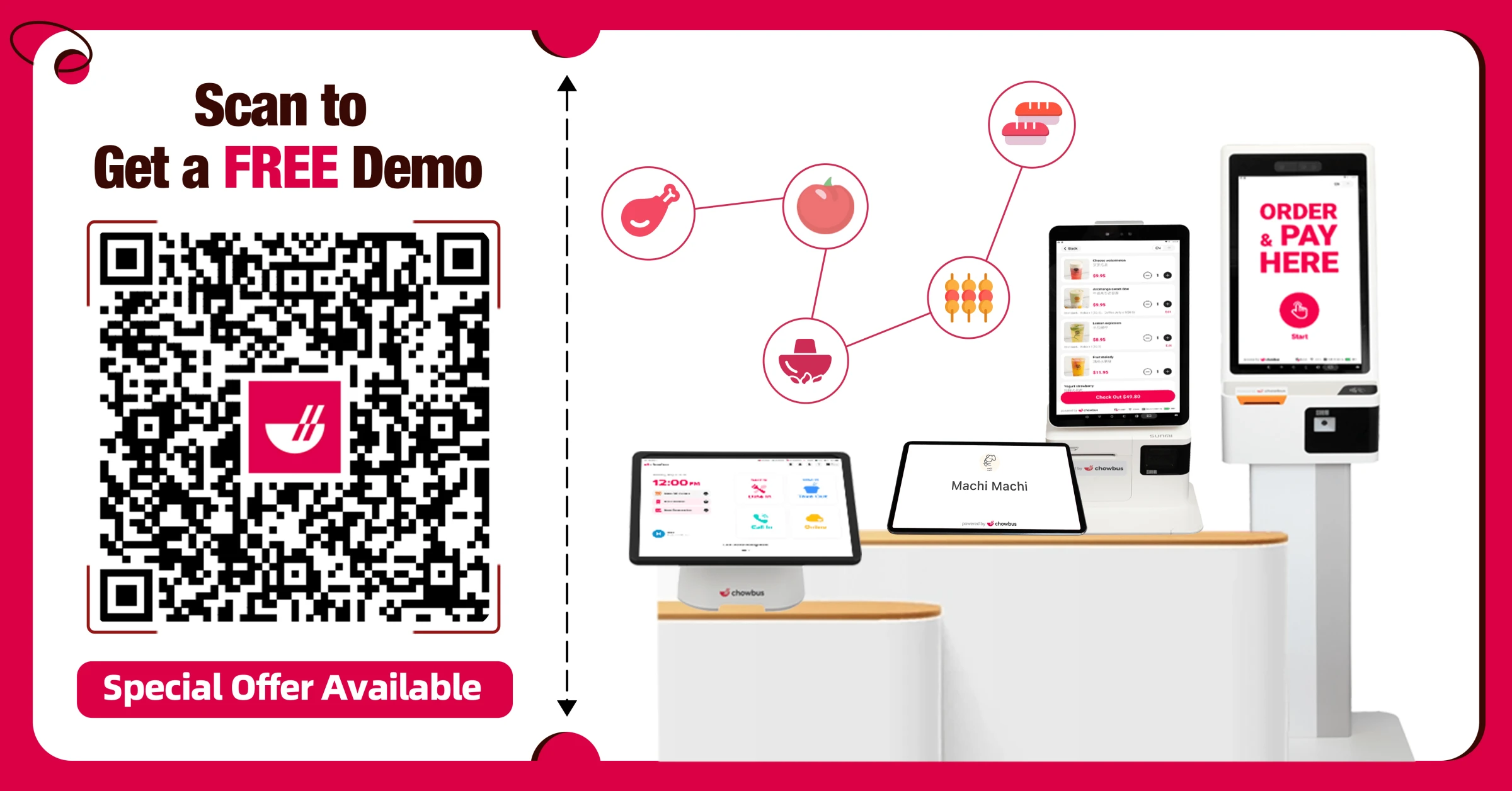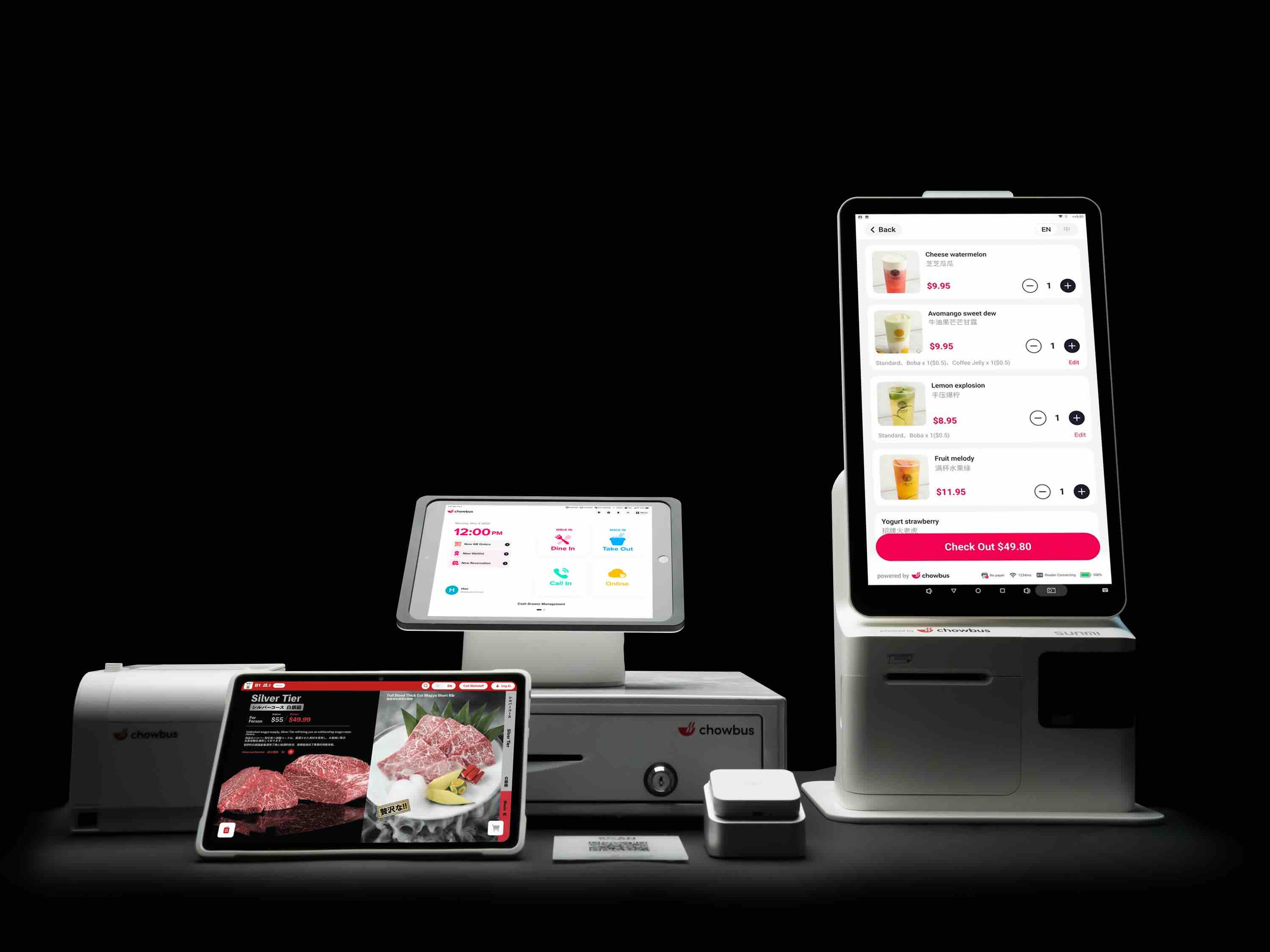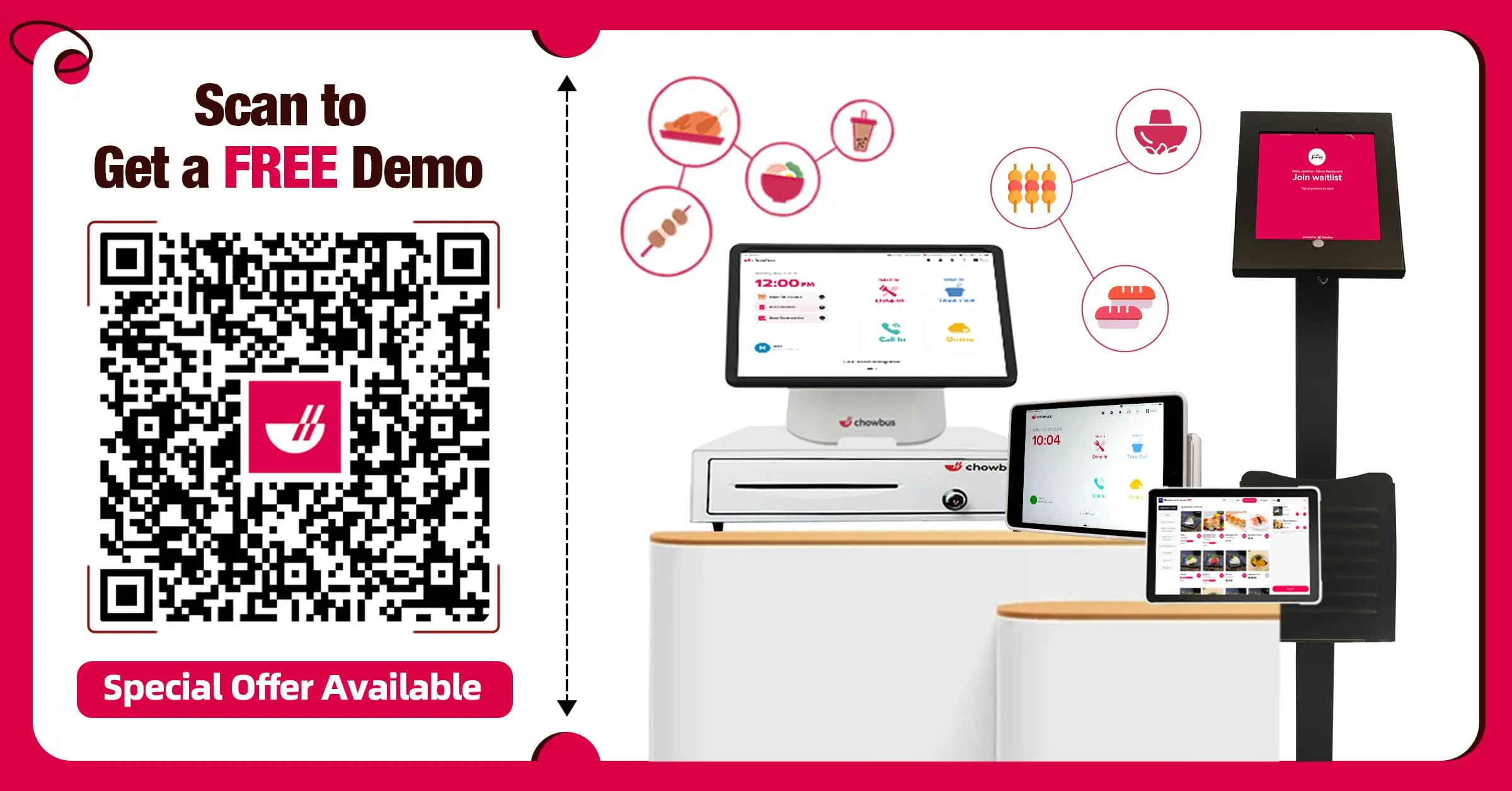Minimum Wage in New York: All You Need to Know in 2024

The minimum wage in New York has seen another update for 2024, making it more crucial than ever for you to stay informed. As a restaurant owner or business employer, these changes directly impact your operations.
But what exactly do you need to know?
In this blog post, we'll dive into the recent adjustments in minimum wage rates across different regions of New York and how they affect your business. From understanding the new wage standards for tipped employees to exploring the broader implications, we've got you covered. So, how will the recent minimum wage increase impact your business? Let's find out together.

What is the Minimum Wage in New York?
As of January 1, 2024, the minimum wage in New York has seen a significant adjustment. In New York City, along with Nassau, Suffolk, and Westchester counties, the rate has risen to $16.00 per hour from $14.20 per hour in 2023.
The state minimum wage for businesses operating outside these areas has also been updated to $15.00 per hour. This increase is part of a planned series of adjustments to progressively raise the state’s minimum wage. Furthermore, from January 1, 2025, expect further increases of $0.50 annually up to January 1, 2026.
Minimum Wage for Tipped Employees in New York
The dynamics of minimum wage in New York vary significantly across different regions and are especially nuanced for tipped employees in the hospitality sector. As of January 1, 2024, the following wage standards apply:
In New York City, tipped service employees earn a cash wage of $13.35 with a tip credit of $2.65. Tipped food service workers are entitled to a $10.65 cash wage plus a $5.35 tip credit.
In Long Island & Westchester, the rates mirror those of New York City, with tipped service employees receiving a $13.35 cash wage and $2.65 in tip credits and tipped food service workers getting a $10.65 cash wage and a $5.35 tip credit.
For the remainder of New York State, tipped service employees have a cash wage of $12.50 and a $2.50 tip credit, while tipped food service workers receive a $10.00 cash wage and a $5.00 tip credit.
Remember, these figures apply exclusively to hospitality employers who are permitted to take a tip credit against the minimum wage.
How Tip Credit Works
The term “tip credit” is something you’re likely familiar with, but its application might still hold some questions. Essentially, tip credit is a provision that allows you, as an employer, to consider a portion of your employees’ tips as part of their hourly wage. This means that the minimum wage requirement can be met through a combination of a cash wage and a tip allowance.
For instance, in New York City, the minimum wage is $15.00 per hour for food service workers. You can meet this requirement by paying a direct cash wage of at least $10.65 per hour, supplemented by a tip allowance of up to $5.35 per hour.
However, there are restrictions. If a tipped employee spends more than 20% of their shift or over two hours on non-tipped tasks, the tip credit cannot be applied for that time. The tip credit is also contingent upon the employee earning an average weekly tip amount that meets or exceeds the specified minimum for your business’s location and size.
Overtime Pay in New York
Navigating overtime pay in New York requires a clear understanding of who is eligible and who is exempt, ensuring that your business remains compliant while effectively managing labor costs.
Who is Eligible for Overtime?
In New York, most employees are entitled to overtime pay at 1 1⁄2 times their regular pay for hours worked over 40 in a workweek. For residential employees, this threshold is 44 hours. It’s important to note that these state requirements are in addition to federal overtime regulations under the Fair Labor Standards Act (FLSA).
However, not all employees are eligible for overtime. Exemptions under the New York State Labor Law and the FLSA include executive, administrative, and professional employees, outside salespeople, and certain workers in specific sectors like agriculture or those employed by religious or charitable institutions. If your employees fall into these categories, they may not be eligible for overtime pay. It’s vital to review both state and federal laws to fully understand your obligations.
New York State Minimum Wage vs Federal Minimum Wage
The minimum wage laws in the United States are a complex interplay between federal and state regulations. The federal minimum wage, as outlined by the Fair Labor Standards Act (FLSA), stands at $7.25 per hour, a figure that has been in place since July 24, 2009. However, states have the liberty to set their own minimum wages. In instances where an employee is covered by both state and federal minimum wage laws, they are entitled to the higher wage. This federal baseline serves as a safeguard, ensuring a minimum standard, but many states, including New York, opt to go beyond this minimum to reflect the cost of living and economic conditions in their regions.
Historical Minimum Wage Rates in New York
Since 2014, New York has seen a consistent rise in the minimum wage, reflecting the state's commitment to improving living standards. Here's an overview of the yearly increases:
2014: $8.00
2015: $8.75
2016: $9.00
2017: $9.70
2018: $10.40
2019: $11.10
2020: $11.80
2021: $12.50
2022: $13.20
2023: $14.20
2024: $16.00
This progression underscores a significant trend towards higher wages, culminating in a notable increase for 2024.
Source: Labor Law Center

New York Minimum Wage & Labor Law Posters
In New York, it's mandatory for employers to display posters in the workplace that inform employees of their rights under various labor laws. These posters include critical information on the minimum wage, working hours for minors, fringe benefits, prohibited wage deductions, and other important labor laws.
The New York Department of Labor makes these posters available for free download. Key posters that must be displayed prominently include:
Minimum Wage Poster: Details about the current minimum wage rates
Working Hours for Minors: A notice showing minors' daily working hours, including meal periods.
Notice of Fringe Benefits and Hours: A display or a distributed copy of the company’s policy on fringe benefits and working hours.
Prohibited Wage Deductions and Tip Appropriation Posting: Information on laws regarding prohibited wage deductions and the appropriation of tips for those in the food or beverage service industry.
Employers must also comply with federal requirements by displaying posters on unemployment insurance, workers’ compensation and disability benefits, anti-discrimination laws, and various other federal labor laws.
The Impact of the Recent Minimum Wage Increase on Your Business
The recent minimum wage increase in New York signifies a crucial change for restaurant owners and business employers. Here's how it can affect your operation:
1. Labor Costs
The primary impact is on labor costs. As wages rise, your payroll expenses will increase, requiring adjustments to your budget. Analyzing your current financial structure and finding ways to balance these higher labor costs without compromising service quality or employee satisfaction is critical.
2. Pricing Strategies
You might need to reconsider your pricing strategies to offset increased labor costs. This could mean adjusting menu prices or finding more cost-effective suppliers without sacrificing the quality of your offerings.
3. Employee Retention and Morale
A higher minimum wage can boost employee morale and retention by providing your staff with a livable wage. This, in turn, can lead to improved service quality and customer satisfaction.
4. Compliance and Legal Implications
Ensuring compliance with the new minimum wage laws is crucial. Failure to adhere to these laws can result in hefty fines and damage your business’s reputation.
5. Competitive Edge
Adopting innovative solutions to manage the wage increase can give your business a competitive edge. For instance, leveraging technology to streamline operations can help reduce overhead costs.
Strategies for Restaurant Businesses to Adapt to the Recent Minimum Wage Increase
With the recent adjustment in the minimum wage in New York, your business may face challenges in managing increased labor costs. Here are several strategies to consider:
1. Revise Your Budget
The first step is to take a closer look at your current budget. With the minimum wage increase, it's essential to find a balance between higher wage expenses and maintaining the quality of your services. This may involve reallocating funds or identifying areas where expenses can be reduced without compromising on quality.
2. Adjust Pricing Strategically
It may be necessary to adjust your menu prices, but this should be done thoughtfully. Analyze the price elasticity of your offerings and your position within the competitive landscape. Implementing small, incremental price changes can help mitigate any negative reaction from your customers.
3. Invest in Employee Training
By boosting the efficiency and productivity of your staff, you can offset the impact of higher labor costs. Investing in training programs that enhance your employees' capabilities can reduce the necessity for a larger workforce, ensuring your team can do more with less.
4. Leverage Restaurant Technology
Leveraging technology becomes a strategic necessity to manage increased labor expenses efficiently. Here's how embracing modern technology can benefit your restaurant or business:
Restaurant Point of Sale (POS) Systems: Upgrading to a modern POS system can revolutionize how you manage transactions, track sales, and analyze customer behavior. These systems offer comprehensive solutions that can simplify operations, making them faster and more efficient.
Online Ordering Platforms: By integrating online ordering into your service offerings, you can expand your customer base and streamline order processing. This reduces the need for front-of-house staff and allows your kitchen to operate more efficiently.
Restaurant Reservation and Waitlist Systems: Digital reservation and waitlist systems can manage your seating capacity more efficiently, reducing wait times and improving the customer experience. This technology allows for better staff planning and table management.
Touch-screen Self-ordering Kiosks: Self-ordering kiosks can reduce queue times and free your staff to focus on other service areas. These kiosks can handle orders accurately, increasing customer satisfaction and reducing errors.
Handheld and Tablet POS Systems: These portable systems allow staff to take orders and process payments directly at the table, improving service speed and accuracy, and allowing for a more personalized customer experience.
QR Code Menus: QR code menus eliminate the need for physical menus, reducing printing costs and the need for menu sanitization. They allow customers to browse your menu on their mobile devices, place orders, and even make payments, streamlining the dining experience.
Kitchen Automation Tools: Automating certain kitchen functions can enhance consistency, reduce waste, and speed up service. From digital order displays to automated cooking equipment, these tools can help your kitchen run more smoothly, requiring fewer staff to produce the same amount of food.
Contactless Payments: Implementing contactless payment options can speed up transaction times, improve customer satisfaction, and reduce the need for direct interaction between staff and customers, enhancing safety and efficiency.
Third-Party Delivery Integrations: Integrating third-party delivery services can extend your restaurant’s reach without adding to your staff. These platforms can handle the logistics of order delivery, allowing you to focus on preparing quality food.
Loyalty Programs: Digital loyalty programs can encourage repeat business and gather valuable customer data. This technology helps personalize marketing efforts and increase customer retention without significant manual effort.
5. Optimize Your Menu
Analyze your menu for profitability and popularity. Focusing on high-margin items or simplifying your offerings can reduce costs and waste, contributing positively to your bottom line.
6. Engage in Community and Social Media Marketing
Building a strong community presence and engaging with customers through social media can drive traffic without the heavy costs associated with traditional advertising.
Facing the challenges of New York's minimum wage adjustments head-on requires the right tools. Chowbus POS is your solution to streamline operations and boost efficiency. Don't let changes slow you down—embrace innovation with our platform. Book your free demo/consultation now and elevate your restaurant's performance!

Frequently Asked Questions About Minimum Wage in New York
Exploring key inquiries surrounding New York's minimum wage regulations, this FAQ section addresses common concerns such as the allowable hours for minors, NYS 45 filing requirements, the application of the 7-minute rule, full-time designation thresholds, and the legal obligations regarding 15-minute breaks in the state.
How Many Hours Can a Minor Work in NY?
In New York, the allowable working hours for minors vary by age, school status, and job type. Minors under 18 cannot work during school hours unless they're school graduates or have officially left school.
For 14 and 15-year-olds, work is limited to no more than 3 hours on a school day, 8 hours on weekends or holidays, 18 hours per school week, and 40 hours during school breaks.
For 16 and 17-year-olds, the cap is at 48 hours per week when school is out. The total work hours across multiple jobs cannot exceed these daily or weekly limits. Consult the New York State Department of Labor for specific exceptions and more detailed regulations.
Do I Need to File NYS 45 If I Have No Employees?
You must file the NYS 45 form even if you had no employees or payroll during the quarter. All employers must submit these reports each quarter. Failing to do so can lead to interest charges and potentially higher Unemployment Insurance rates in the coming years.
What is the 7 Minute Rule in NY?
The 7-minute rule in NY is a guideline for employers on how to round work hours, applying when time is tracked in 15-minute increments. According to the Fair Labor Standards Act (FLSA), this rule allows employers to round down employee time to the nearest quarter-hour if the work time is between 1 and 7 minutes.
Conversely, if an employee works 8 to 14 minutes beyond their scheduled time, the employer must round this up to the next 15-minute mark. For instance, if an employee clocks out 13 minutes after their scheduled end time, their time should be rounded up, resulting in an additional 15 minutes of work time being recorded.
Is 32 Hours Full-time in NY?
Whether 32 hours per week constitutes full-time employment in New York depends on the employer’s specific policies. Generally, working 32 hours or more weekly may classify an employee as full-time, aligning with the IRS and the Affordable Care Act’s criteria, which consider 30 hours a week or 130 hours a month as full-time. For the most accurate definition, consulting directly with the employer in question is advised.
Are 15 Minute Breaks Required by Law in NY?
In New York, the law does not mandate employers to offer 15-minute breaks. However, if employers choose to provide brief rest periods, typically ranging from 5 to 20 minutes, these must be recognized as paid working time.
This approach aligns with Federal Regulation 29 CFR §785.18, emphasizing that such breaks can enhance employee efficiency and are traditionally compensated. Therefore, while not required by law, any short breaks given or utilized by employees are considered hours worked and must be compensated accordingly.
Disclaimer: The information provided in this blog post is for educational and informational purposes only. While we strive to provide accurate and up-to-date information, consulting with legal or financial professionals for specific guidance tailored to your circumstances is important. We do not assume liability for actions taken based on the information provided herein. Additionally, please note that minimum wage laws and regulations may vary by jurisdiction and may be subject to change.

Recommended Articles: